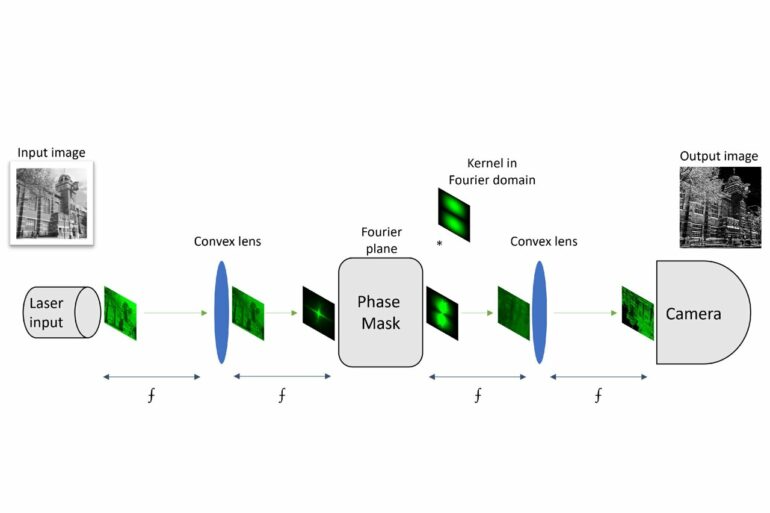Lithography, an essential process in the semiconductor industry, lies at the heart of the manufacturing technology for modern-day electronics. In essence, it is a printing technique used to define and pattern all the intricate structures of a circuit using light. The level of nanometric precision achieved using lithography is what makes modern integrated chips, housing billions of transistors, possible.
However, achieving such a precision requires an extremely fine-tuned and optimized lithography system with carefully designed masks and optical components. This is where aerial image simulations come in handy.
They provide engineers a close approximation of the pattern that needs to be projected onto the silicon substrate as light passes through masks and lenses. In this way, they can be certain that the finished product will be free of manufacturing defects during mass production. However, a major issue with these simulations is that they are computationally intensive and time-consuming.
Fortunately, a research team from Taiwan has now found a clever and efficient solution to this challenge. In their latest study, published in the Journal of Micro/Nanopatterning, Materials, and Metrology, they report a straightforward way to massively speed up aerial image simulations with virtually no downside. The study was led by Professor Tsai-Sheng Gau from National Tsinghua University, Taiwan.
To grasp the main idea behind their approach, it helps to understand what a Fourier transform (FT) is. Put simply, FT maps a signal in space to a signal in the spatial frequency domain, or vice versa. In a frequency domain, the information of the original function in space is expressed as a combination of sinusoidal waves of different frequencies.
The FT is used during aerial image simulations as it makes it easier to calculate how light interacts with the lithography system. Once the effects of the system are applied to the transformed function, one can obtain the simulated aerial image in the space domain by applying an inverse FT.
However, computing the FT usually takes a lot of time owing to the nature of the calculations involved. For aerial image simulations, it can take several days. To overcome this hurdle, the researchers tried to find a way to apply the fast Fourier transform (FFT) instead.
Put simply, FFT calculates the FT in fewer steps. However, it is only applicable if the input data size comes in powers of two (64, 128, 256, etc.). Unfortunately, in the case of aerial image simulations, the wavelength of the light used for lithography does not match this requirement, preventing the use of FFT.
Interestingly, the team found a way around this issue. Through mathematical analysis, they calculated a scaling factor that, when applied to the lithography mask, effectively scales the wavelength down to a power of two. This, in turn, enables the use of FFT. Once the calculations are complete, one simply needs to compute the inverse FFT and scale back the obtained aerial image to recover the original wavelength.
With this approach, the researchers demonstrated a massive improvement in computation speed. “Compared to the original FT, we noted a computation speed improvement of 4,000–5,000 times, with a slight intensity deviation of about 3%,” Gau said. Additionally, they tested the performance of the new algorithm for several test cases, obtaining extremely consistent results in terms of speedup and error.
The implications of their work for lithography, pertaining to research as well as industrial applications, are significant. “Our algorithm is simple and straightforward to implement on popular commercially available platforms,” said Gau. “For schools and research organizations with limited resources for purchasing speedy computation equipment or industrial simulation packages, this paper provides a powerful algorithm for converting traditional FT to FFT, saving enormous computational costs.”
Given the fundamental role of aerial image simulation in lithography and, by extension, in all of electronics, this study could pave the way for better devices, lower costs, and even breakthroughs in manufacturing technology.
More information:
Tsai-Sheng Gau et al, Ultra-fast aerial image simulation algorithm using wavelength scaling and fast Fourier transformation to speed up calculation by more than three orders of magnitude, Journal of Micro/Nanopatterning, Materials, and Metrology (2023). DOI: 10.1117/1.JMM.22.2.023201
Citation:
Novel image simulation algorithm boosts image intensity computation speed 5,000-fold (2023, June 21)



